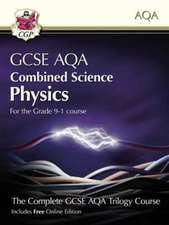Digital Storage Systems
Autor W. Renwicken Limba Engleză Paperback – 6 mar 2012
Preț: 386.39 lei
Nou
Puncte Express: 580
Preț estimativ în valută:
73.94€ • 80.64$ • 62.34£
73.94€ • 80.64$ • 62.34£
Carte tipărită la comandă
Livrare economică 24 aprilie-08 mai
Preluare comenzi: 021 569.72.76
Specificații
ISBN-13: 9789401168892
ISBN-10: 940116889X
Pagini: 324
Ilustrații: X, 310 p. 24 illus.
Dimensiuni: 140 x 216 x 17 mm
Greutate: 0.38 kg
Ediția:Softcover reprint of the original 1st ed. 1971
Editura: SPRINGER NETHERLANDS
Colecția Springer
Locul publicării:Dordrecht, Netherlands
ISBN-10: 940116889X
Pagini: 324
Ilustrații: X, 310 p. 24 illus.
Dimensiuni: 140 x 216 x 17 mm
Greutate: 0.38 kg
Ediția:Softcover reprint of the original 1st ed. 1971
Editura: SPRINGER NETHERLANDS
Colecția Springer
Locul publicării:Dordrecht, Netherlands
Public țintă
ResearchCuprins
1 Introduction.- 1.1 Historical 1.2 Organization of a typical storage unit 1.3 Storage requirements in digital computers 1.4 Classification of storage systems.- 2 Delay Line Storage.- 2.1 Acoustic lines 2.1.1 Mercury delay lines 2.1.2. Quartz delay lines 2.1.3 Magnetostrictive delay lines 2.2 Electromagnetic lines 2.3 Temperature effects 2.4 Access circuits.- 3 Electrostatic and Ferroelectric Storage.- 3.1 Electron-beam storage devices 3.1.1 Williams C.R.T. store 3.1.2 Barrier-grid storage tube 3.1.3 Holding-gun tube 3.1.4 The selectron 3.1.5 Thermoplastic recording 3.2 Diode-capacitor storage 3.3 Ferroelectric storage.- 4 Magnetic-Surface Recording.- 4.1 Methods of recording 4.2 The recording medium 4.3 The recording head 4.4 Factors limiting digit packing density 4.5 Magnetic drums 4.5.1 Drum-access circuits 4.5.2 Regenerative tracks 4.6 Magnetic tape 4.6.1 Tape transport mechanisms 4.6.2 Tape access arrangements 4.7 Magnetic discs 4.8 Magnetic cards 4.9 Access techniques.- 5 Access, Digit and Control Circuits in Random-Access Systems.- 5.1 Access circuits 5.1.1 Combinatorial selection methods 5.1.2 Switch-core selection matrix 5.1.3 Load-sharing matrix switches 5.1.4 Comparison of the relative costs of selection arrangements 5.2 Digit circuits 5.2.1 Sensing circuits 5.2.2 Writing circuits 5.2.3 Control circuits.- 6 Magnetic-Storage page.- 6.1 Core characteristics 6.2 The 3D selection system 6.3 The 2D selection system 6.4 The 2½D selection system 6.5 Other selection systems for single cores 6.6 Systems employing two cores per bit 6.7 Multiple-hole cores 6.8 Monolithic ferrite systems 6.9 Drive and sense circuits.- 7 Thin Magnetic Films.- 7.1 Preparation of thin magnetic films 7.1.1 Vacuum evaporation 7.1.2 Electroplating 7.2 Film characteristics and theirmeasurement 7.2.1 Calculation of hysteresis loops and switching asteroid 7.2.2 Measurement of film characteristics 7.3 Operating modes 7.3.1 The destructive read-out mode 7.3.2 The non-destructive read-out mode 7.3.3 The non-destructive read/write mode 7.4 Application of planar magnetic films 7.4.1 Single layer systems 7.4.2 Double layer systems 7.5 Applications of cylindrical magnetic films: plated wire 7.6 Other thin magnetic film elements 7.6.1 The twistor 7.6.2 The rod memory 7.6.3 Domain-wall storage 7.6.4 The waffle iron 7.6.5 The sonic film memory 7.7 Design of selection and digit electronics.- 8 Semi-Conductor Storage.- 8.1 Some manufacturing techniques of integrated circuit components 8.2 Bipolar integrated circuit memories 8.3 MOSIC elements 8.4 Some trends in integrated circuit memory design 8.5 Interconnection techniques 8.6 Tunnel diodes 8.7 The cryosar.- 9 Other Random Access Systems.- 9.1 Superconductive storage 9.1.1 The cryotron 9.1.2 Two-hole storage cell 9.1.3 Continuous-sheet storage array 9.1.4 The persistor and persistatron 9.1.5 Advantages and disadvantages of superconductive storage 9.2 Electron beam surface recording 9.3 Optically addressed storage 9.4 Opto-electronic storage.- 10 Non-Erasable Storage.- 10.1 Arrays of linear coupling elements 10.1.1 Capacitively coupled arrays 10.1.2 Inductively coupled arrays 10.2 Permanently wired transformer-coupled systems 10.3 Systems based on erasable storage techniques 10.4 Systems using optical techniques 10.4.1 The flying spot store 10.4.2 Electroluminescent storage techniques 10.4.3 Holographic storage 10.4.4 Other optical systems 10.5 Semiconductor storage.- 11 Review of Current and Future Developments.- 11.1 Review of storage systems 11.1.1 Review of large-capacity storage systems 11.1.2 Review of medium-capacity systems 11.1.3 Review of low-capacity systems 11.1.4 Review of non-erasable and non destructive read-out storage 11.2 Factors limiting capacity 11.2.1 Reduction of effective cycle time by division of the store into blocks 11.3 Factors relating to system cost of random-access stores 11.4 Factors limiting operation speed of random-access storage systems 11.4.1 Amplifier delay (T7) 11.4.2 Logic circuits (T2, T8 and T9) 11.4.3 Transmission delays (T4, T6) 11.4.4 Address decoding circuits (T1) 11.4.5 Access circuits 11.4.6 Recovery effects 11.4.7 Ultimate limits to operating speed 11.5 Future trends 11.5.1 System organization 11.5.2 Storage techniques.








